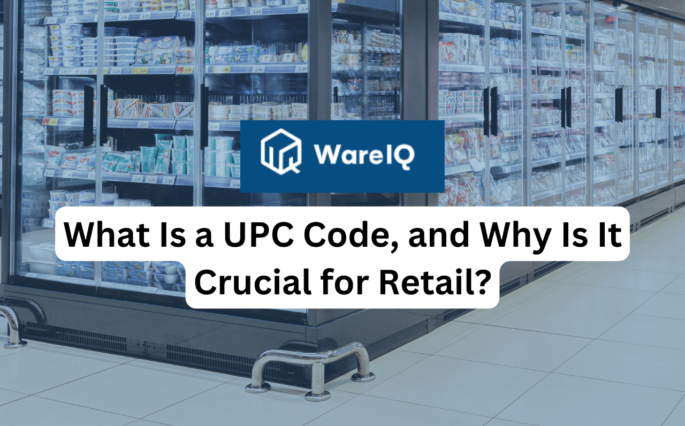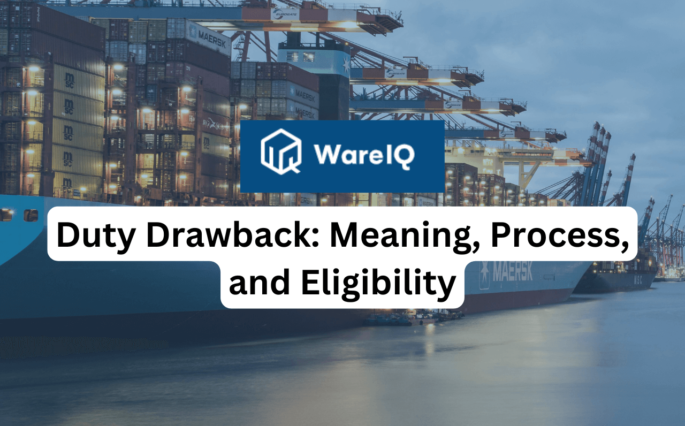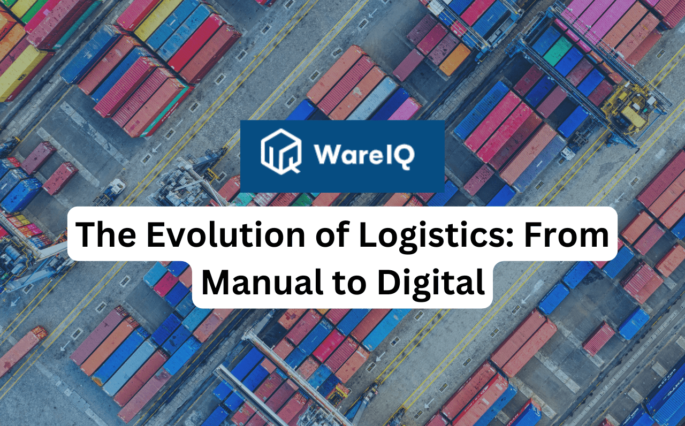What is Fulfillment Status? A Comprehensive Guide in 2025

Each process has a result that matters the most. While an end-user may only think about the final outcome, the result can vary if all the steps in a process are not executed well. Fulfillment status is the fulfillment of a promise made to the end consumer that matters.
Similarly, every order that a customer confirms has a lifecycle:
- order placement
- processing
- fulfillment
When the number of orders per day increases from a few hundred to thousands and then lakhs, it tends to become cumbersome for the business to manage all these orders by themselves. The completion of the fulfillment lifecycle determines the success of every order. When a customer places an order on a website, both the customer and the service provider keep an eye on the status of the consignment to know if it has been fulfilled yet.
But what does order fulfillment status mean? Let’s take a look.
- What is Fulfillment Status?
- What is the Difference Between Order Status and Fulfillment Status?
- 6 Step Processes Involved in Order Fulfillment Status in 2025
- What are the Benefits of Fulfillment Status?
- How is Order Fulfillment Status Tracked?
- Conclusion
- Fulfillment Status FAQs (Frequently Asked Questions)
What is Fulfillment Status?
Order fulfillment status refers to an order’s completion level in relation to the processes of the order lifecycle with the final goal being delivery to the end customer.
The fulfillment status of a shipment highlights the stage of the order after the payment gets processed until delivery to the end customer. It depends on the activities of the service provider. It reveals whether the order gets processed correctly and when it can be shipped to the customer.
What are the different stages of Fulfillment Status?
An order’s Fulfillment Status is categorized into six stages as per its readiness to be shipped:
- Fulfilled: Delivering a complete shipment deserves the status of a fulfilled order. This status does not wait for or depend on the customer accepting or returning the final product.
- Unfulfilled: A freshly placed order is described as unfulfilled until it is delivered to the customer, or the order query has been closed due to another reason like a return, refund, or decline by the seller. The order stays unfulfilled until the ordered inventory has been picked.
- Partially Fulfilled: When only some parts of a shipment get transported, it ranks as a partially fulfilled shipment. For example, this can happen when the customer orders multiple items in one shipment and not all are readily available at the time of processing. For the items pending delivery, either a refund gets processed, or they are queued for delivery later. In each case, the customer receives a notification via their preferred mode of communication; text, call or email.
- Queued Shipment: This is the penultimate stage before the order reaches the customer. This is the stage after the inventory has been picked, processed, and packaged, and the final product is ready for delivery. Then, it just needs a pick up by the delivery personnel and transportation. The customer gets a notification via written communication and a tracking number is assigned the moment the order leaves the service provider’s premises.
- On Hold: The shipment status goes on hold when the customer has added goods to the cart but has not confirmed the order or made the payment yet. The service provider can locate the inventory but cannot begin processing until they receive a confirmed order from the customer. The status changes to unfulfilled when the order is confirmed, which the service provider can then undertake.
- Scheduled: This status primarily applies to prepaid shipments before their fulfillment date is reached. Their fulfillment date as per the subscription then changes to unfulfilled. The service provider can then begin the process of completing the order.
WareIQ, an eCommerce fulfillment company, empowers online brands with a superior-tech platform to compete with Amazon like service levels by bringing their average delivery timelines from 5-10 days to 1-2 days.
What is the Difference Between Order Status and Fulfillment Status?
| Order Status | Fulfillment Status | |
|---|---|---|
| Responsibility | Fulfillment status depends solely on the service provider’s activities. | Unlike fulfillment status, the status of an order is mainly related to an action carried out by the customer. |
| Initiation | Fulfillment status depends on the shipment’s stage of completion. | Order status depends on the stage of the order regarding the customer’s decision. |
| Processes | Fulfillment status covers the entire process of the receiving the order, picking the right product in the warehouse and shipping it to the customer. | Order status covers stages of the service provider’s activities and the progress made towards completing the order. |
Depending on the stage the customer is at, the status of an order can range from Open, Archived to Cancelled.
Open Order: When the customer is surfing and has not placed the order yet, the status stays open until order confirmation or payment.
Archived Order: An order goes into the archive when it gets canceled, needs a refund, or faces any other issue. Orders can be manually or automatically archived for viewing after being attended to. Both the customer and the service provider can archive it. It does not mean it gets deleted; instead stored in records away from the sight of the order page.
Cancelled Order: As the name suggests, the order status appears as ‘Cancelled’ when the customer withdraws it. Yet, an order is not fulfilled if a refund is pending for the customer.
6 Step Processes Involved in Order Fulfillment Status in 2025

Receipt of Inventory
Fulfillment status begins with locating the inventory in the warehouse or a storage unit and retrieving it for assembly as per the customer’s order details. Before processing the final product, the service provider needs to ensure that each piece of the inventory is of desired quality and is not damaged. Then SKU labels and barcodes are put on each piece before reading them for pick up.
Order Picking
The inventory identified needs to be picked from the warehouse or any off-site location. It helps if the inventory is organised as per their urgency. For instance, the items in frequent demand can be placed upfront, followed by less-required products.
The company’s staff or a 3PL fulfillment company can pick up the shipment. At times, the dropshipping method is also used. This is where the manufacturer directly processes and ships the finished product to the customer. As a result, the service provider does not need to host the inventory or finished product; instead, it is sent directly from the seller to the buyer.
In case of an unfulfilled order, the inventory can be picked through single-order, batch, cluster or zone picking.
in Batch Order Picking, workers pick up inventory individually according to a batch or group of multiple orders. In Single-Order Picking, they pick up the stock as per the individual order received. In Zone Picking, they retrieve the inventory as per the geographical zone or area. And in Cluster Picking, the pickers gather the inventory from various SKUs and multiple orders rather than concentrating on just one.
In another mode called Pick and Pass, the warehouse is categorised into different areas as per the inventory stored. Pickers get positioned in every designated area and then manually pick the required inventory and pass it over.
Processing
The next stage is making the finished goods ready for the customer. It requires excellent integration between the service provider and customer interfaces for a seamless flow of information from the order to the fulfillment stage. This system needs to prompt the warehouse staff about the inventory required when a customer places an order.
Processing includes identifying the inventory required for putting together the final product and locating them in a warehouse or storage unit.
Packaging
The order must be packed well to prevent damage during transit before being sent for weighing and labeling. Efficiency and transparency are essential in this stage. That is why many companies offer customisations such as automated fulfillment services as per the needs of the service provider and their customers. Because of these features, orders will be packaged with efficiency regardless of the volume.
The packers must observe and try to get the lowest possible dimensional surface area while packing a shipment to be able to place more orders inside the truck. This helps in reducing transportation costs and saves time.
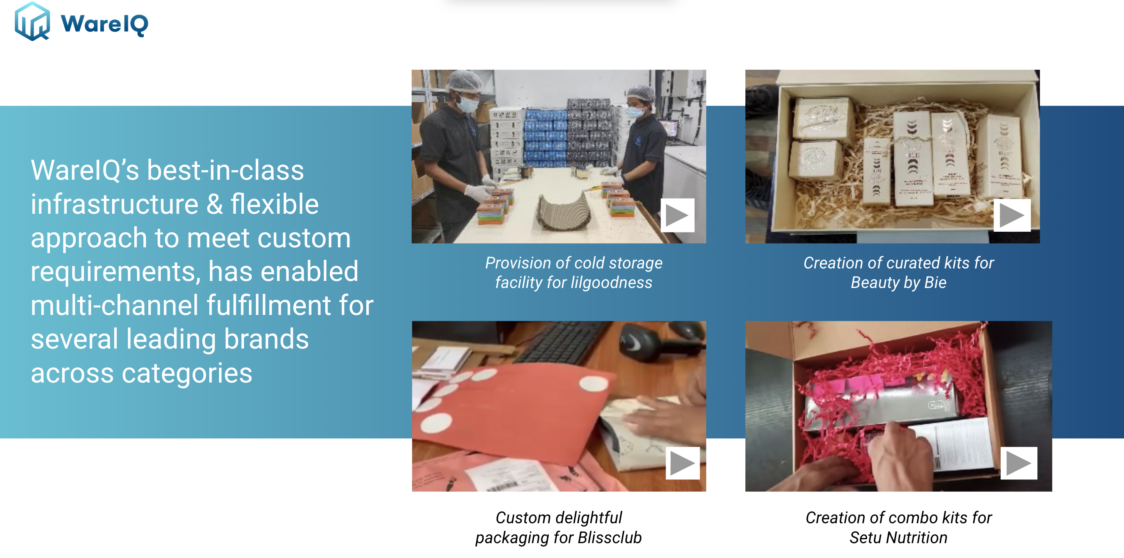
Shipping and Delivery
This is the last stage where the product is in the hands of the service provider. The package gets weighed, labelled, documented, and is ready to get shipped to the customer. The service provider needs to select the fastest and most secure way to deliver the order. The nitty-gritty of the eCommerce shipping method depends on the type of product getting transported. For instance, a perishable product must be despatched with a coolant. In contrast, a fragile product will need proper bubble wrapping.
An order is said to be fulfilled when the end customer receives it along with a written confirmation via a preferred mode like email or text. After the delivery, the service provider must seek the customer’s written feedback about the whole experience, from browsing to ordering, receiving and using the product.
Statistics say that 73.6% of customers believe that delivery is the key to a seamless shopping experience.
Returns
Suppose a customer doesn’t like the product and intends to return it. In that case, the order remains incomplete until returned to the service provider. As mentioned above, including return labels in the shipment saves time for both the user and the service provider and gets brownie points for the latter.
Once returned, the item needs a thorough check for damage before returning to the inventory and processing the refund. The service providers still need to stay in touch with the customer for feedback and to encourage future purchases.
What are the Benefits of Fulfillment Status?
Given below are some of the benefits of order fulfillment Status that service providers cannot ignore:
Being a source of Information
Information, especially through eCommerce logistics companies, drives all decisions, and fulfillment status provides it in abundance. Customers invest their time and money in the overall delivery experience. 75% of them expect information on the processing of their order. In comparison, 51% of customers wish to receive real-time visibility into their shipment progress.
Fulfillment Status does that on behalf of the service provider. Therefore, keeping the end customers informed of their order progress is critical to being successful and encouraging repeat purchases for service providers.
Maintaining Order Accuracy
This is crucial for both parties. Order fulfillment Status highlights the details of a shipment for scrutiny. Most customers lose faith in a service provider due to wrong orders being delivered. The top reasons for order returns are damaged goods (22%), different looks as compared to online pictures (22%), and receipt of a wrong item (23%).
Whether for checking the availability of raw materials, tools for warehouse allocation, or checking processing timings, fulfillment status assists service providers in managing their inventory.
Inventory Management
Multi-channel selling has raised the need for comprehensive inventory management, which enhances the service provider’s reach in a shorter time period. Its tech platform leverages real-time data to facilitate the service provider to predict the future demand for a product. The first and most significant step in successful order fulfillment is receiving and sorting the inventory as per the order. In other words, Order fulfillment status means supplying the service provider with good visibility of the inventory.
Customer Satisfaction Leading to Customer Referrals
Besides the 3 points above, companies have another primary reason for investing in fulfillment status; the higher the success rate of their order fulfillment, the better their reputation, which profoundly influences their sales figures. New customers rely on a company’s ratings before selecting their service. Existing customers would not reinvest unless they had a good experience earlier.
How is Order Fulfillment Status Tracked?
One can track an order fulfillment status in two ways: before and after the order is fulfilled. Here’s how tracking happens.
Each status can be tracked by adding a tracking number to the order and displaying real-time fulfillment or shipping details for the customer’s order. Customers receive this tracking number at the time of order confirmation so they can check the fulfillment status whenever they want.
Before Fulfillment
We have discussed the pre-fulfillment process that involves steps like receiving inventory to shipping or delivery and, approximately 30% of the time, returns.
Tracking an order status will yield one of the below results if done before fulfillment:
- Pending: This indicates that the customer did not complete the order.
- Awaiting Payment: This indicates that the customer did not proceed to payment after adding items to the cart.
- Awaiting Fulfillment: Awaiting fulfillment indicates that the customer has confirmed the order from their end, and it is the service provider’s turn.
- To be Shipped: This indicates that the order has been packaged and waiting to be shipped to the customer.
- To be Picked-up: This tracking status appears when the customer needs to pick up the order from a pick-up outlet.
- Partially Shipped: This indicates only a portion of the order has been shipped.
- Shipped: This indicates that the completed order has been sent.
- Partial Refund Generated: This indicates that the refund requested by the customer has been partially generated.
- Complaint Received/Disputed Order: This indicates that the customer has filed a complaint or raised an issue in relation to the order or delivery.
After Fulfillment
After fulfillment, tracking will yield one of the below results:
- Delivered: This indicates that the complete shipment has been successfully delivered to the customer.
- Canceled: This indicates that the customer has cancelled the order.
- Returned: This indicates that the order has been returned as per the customer’s request.
- Refunded: This indicates that the amount paid towards the shipment by the customer has been fully repaid.
- Declined: This indicates that the seller has rejected the order.
Conclusion
The success of the supply chain, especially in retail, depends on order completion. While fulfillment strategies have always retained the power to disrupt a supply chain, they have managed to arrive at the heart of customer experience in the past decade.
A good platform for integrating the fulfillment center‘s and user’s experience can profoundly affect a company’s Order Fulfilment success. Having a robust system in place that makes the task easier at every stage of the fulfillment cycle is critical. Many companies employ excellent ERP software that integrates well with suppliers, vendors, and customer interfaces. Such a system helps accurately predict customer demand and optimise inventory, human resources, and finances. This is where WareIQ can help.
WareIQ, a Y-combinator backed startup, has rapidly grown to be the leading provider of full-stack eCommerce fulfillment services for 300+ reputed eCommerce & D2C brands in India. WareIQ allows you to reach a larger audience in a shorter period of time with storage facilities spread across India and closer to your demand centers. Our smart inventory placement ensures that your demand centers are well-stocked and enables efficient & prompt delivery. We help you evolve from a 5-15 day delivery system to the same day and next day Amazon-like delivery system and are already helping 100+ other brands in India to do so.
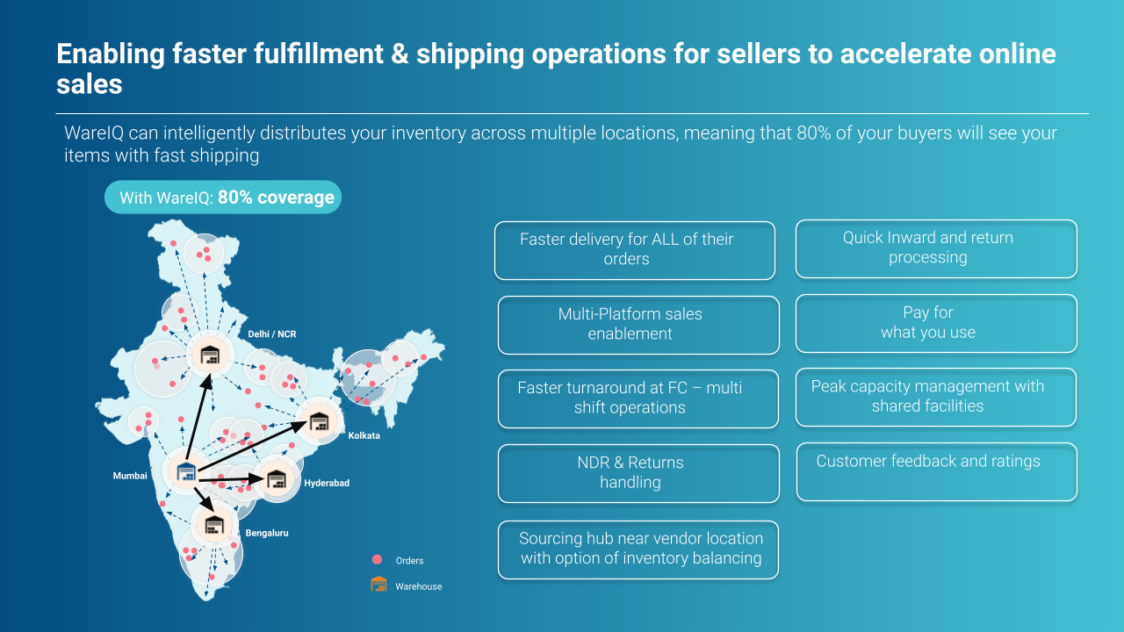
With world-class WMS functionalities, WareIQ handles the entire range of intricate operations in the eCommerce fulfillment process, ranging from Inbound Operations such as scanning and quality check, through 100% accurate Pick and Pack, to Inventory Management across all channels. At the same time, WareIQ customers realise significant cost savings and wider reach due to better negotiations with shipping partners, strategically placed warehouses, economies of scale and scope in warehousing, and data-driven decision-making. WareIQ’s fulfillment platform enables eCommerce players to provide a superior post-purchase experience to their customers through an app store that has various apps like branded tracking, post-ship badges, RTO shield, etc.

WareIQ’s WMS, a centralised tech platform helps to better manage undelivered orders by reducing NDR processing time by 12 hours – a multifunctional NDR dashboard helps to track and take immediate action for undelivered orders in real-time, thereby reducing RTO by up to 10%. Automatic replenishment recommendations and easy purchase order creation capabilities on the WareIQ platform further empower eCommerce companies to leverage all possible ways of increasing their ROI.
- Pan India Fulfillment & Darkstore Network: Plug-and-play fulfillment infrastructure with no minimums, which is compliant with Amazon Seller Flex, Flipkart Assured, Myntra and other marketplaces
- Inventory & Network Planning Excellence: Best-in-class AI models for sales forecasting, product segmentation, and inventory management to reduce inventory by 40% and increase revenue by 10%.
- Vertically Integrated Fulfillment Tech Stack: Our Fulfillment Tech Solution supports integrations with 20+ top marketplaces & D2C platforms, and prominent national, regional and hyperlocal couriers, enhancing reach by covering deliveries for 27,000+ pin codes
- Supply Chain Productivity Applications: Integrate a host of supply chain productivity apps with a single-click to your existing CRMs, ERPs & accounting software to manage your logistics workflows from one command center. Use Apps like RTO Shield to get 100% RTO protection, Branded Tracking to turn your order tracking page into a profitable marketing channel, and many more.
Trusted by 300+ top Indian brands, we are helping them accelerate online sales and expedite their growth through a synergistic combination of advanced technology, robust fulfillment infrastructure & seller enablement services!WareIQ is backed by leading global investors including Y Combinator, Funders Club, Flexport, Pioneer Fund, Soma Capital, and Emles Venture Partner.






